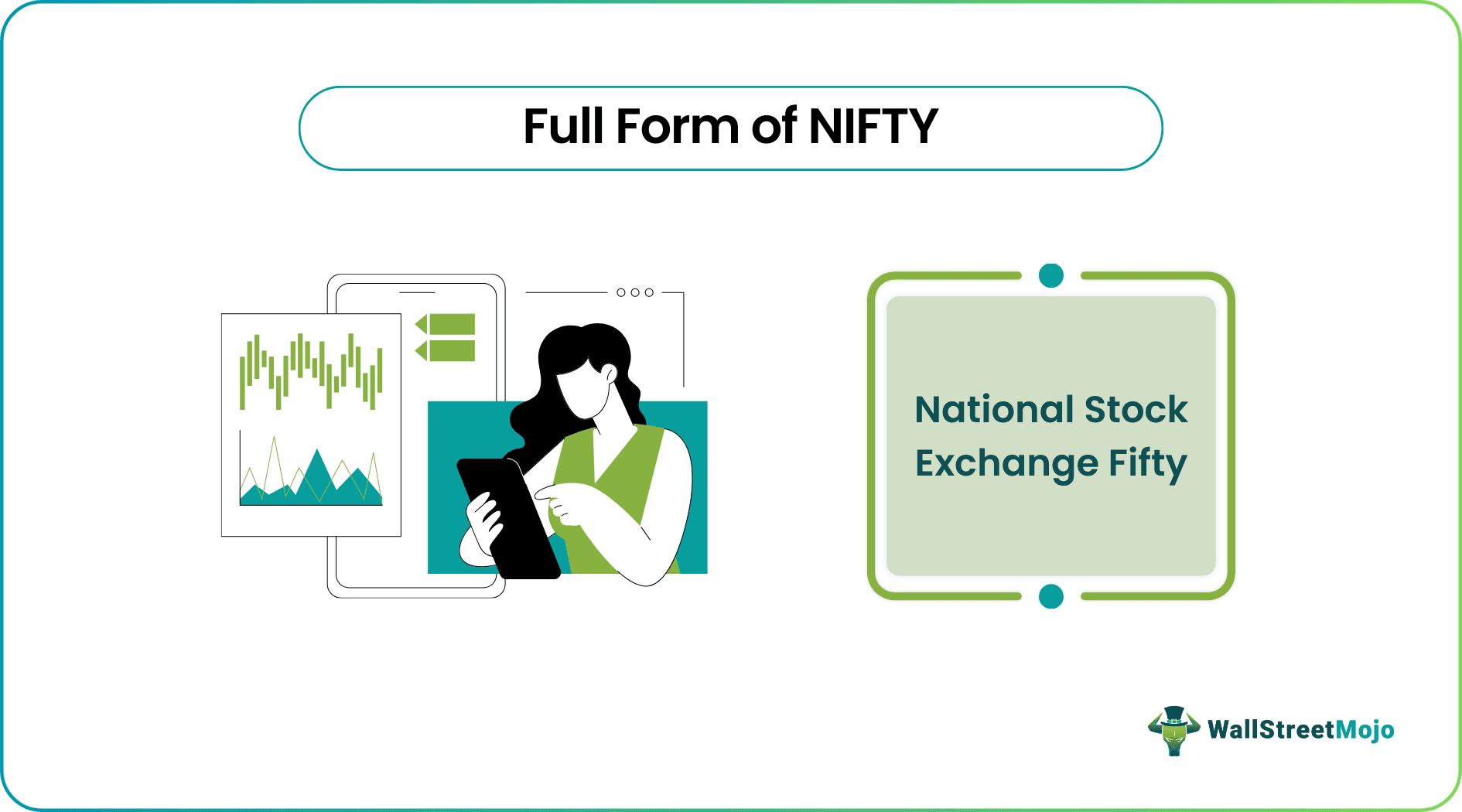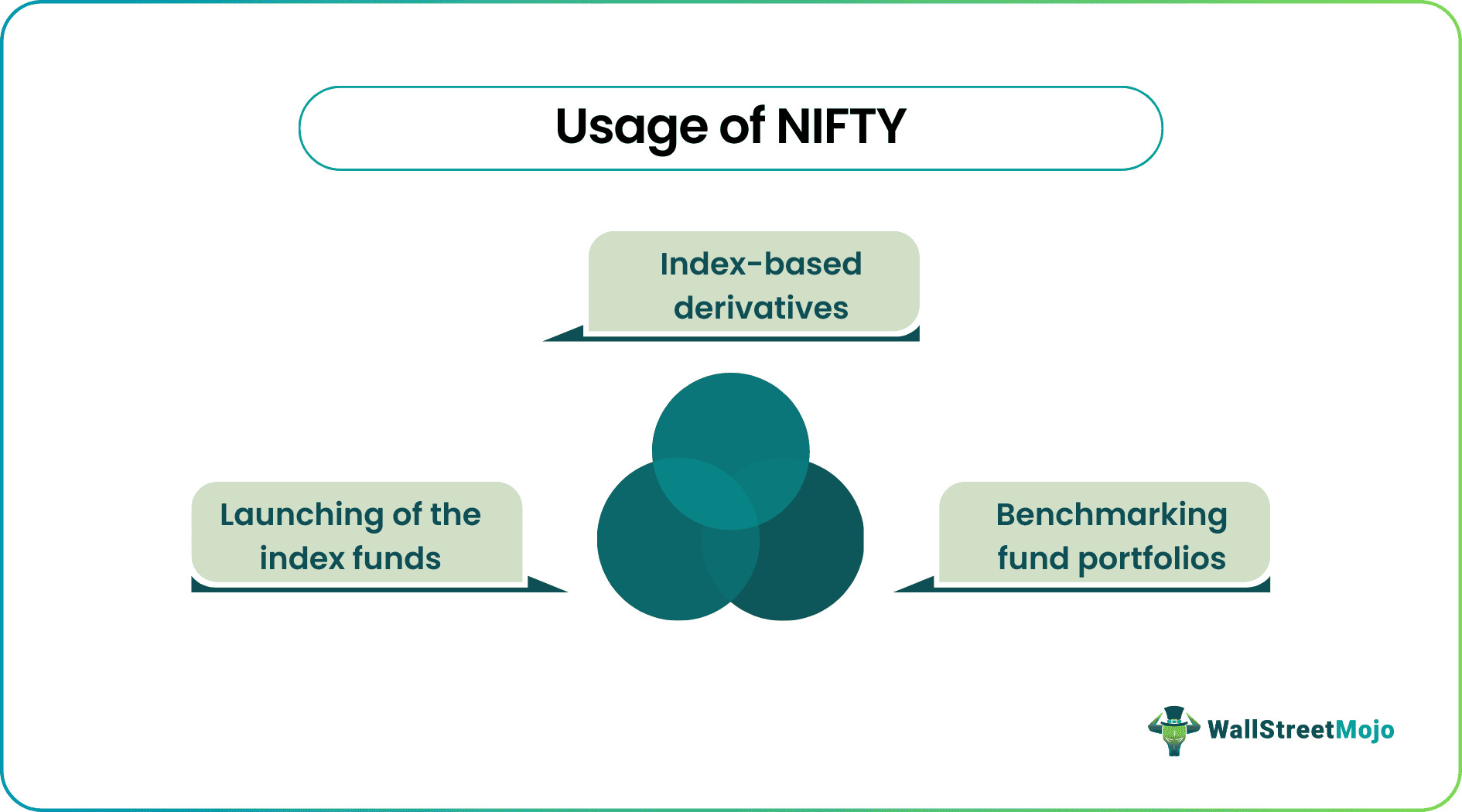Table Of Contents
Full Form of NIFTY - National Stock Exchange Fifty
The full form of NIFTY is National Stock Exchange Fifty. The NIFTY is the major benchmark index of the NSE (National Stock Exchange), comprising stocks of 50 different companies from different diversified sectors of the economy where the valuation of the NIFTY is determined based on the performance of these stocks. It is owned as well as managed by NSE Indices Limited.
How is NIFTY Calculated?
One may use the weighted free-float market capitalization method to calculate the NIFTY. The free-float capitalization of the company is considered for index calculation and assigning weights to the stocks in the index. The following are the steps that one can use for calculating NIFTY:
- For calculating the value of National Stock Exchange Fifty, firstly, market capitalization will be determined by multiplying the shares outstanding with the current prices of all companies in NIFTY.
- After that, calculate free-float market capitalization by multiplying the market capitalization of each company with its investable weight factor (IWF), where IWF refers to the unit of the floating stock of the company when expressed in terms of the number of shares that are available for the purpose of trading.
- For the floating stock holding of promoters or groups of promoters, strategic stakes by the corporate bodies, shares under the log-in category, cross-holdings, FDIs, Holdings of government as the strategic investor, and employee welfare trusts exclude from the number of shares that are available for trading. Then, it will add the float market capitalization of all the stocks together.
- After calculating free-float market capitalization, base market capital and base index value will take where base market capital is the market capitalization of the base year, and the base index value is kept at 1000.
- Lastly, calculate the index value using the formula:
Index Value = (Current Market Value / Base Market Capital) * Base Index Value

Many traders use Saxo Bank International to research and invest in stocks across different markets. Its features like SAXO Stocks offer access to a wide range of global equities for investors.
Usage of NIFTY
One can use the NIFTY for various purposes. For example, the following are some of the usages of the National Stock Exchange Fifty:

- Benchmarking fund portfolios
- Launching of the index funds
- Index-based derivatives
Difference between NIFTY and SENSEX
The following are the main differences between NIFTY and NSE:
- NIFTY stands for the National Stock Exchange Fifty, whereas SENSEX stands for the Sensitivity Index.
- The Nifty is the benchmark index of the NSE, which consists of 50 companies most actively traded on the National Stock Exchange. In contrast, SENSEX is the benchmark index of the BSE. The stock market indexes consist of the 30 well-established and financially sound companies listed on the Bombay Stock Exchange.
Advantages
The following are the benefits of the National Stock Exchange Fifty:
- It is one of the highest liquid stock market indexes in the futures and options category, which means the trades can easily enter and exit from their positions.
- One can easily use its flexibility as this option among the various ranges of strategies, from very conservative to the options with higher risks.
- It is impossible to manipulate as it involves many players on both sides of the trade. Moreover, The National Stock Exchange Fifty is determined based on 50 stocks, so manipulating such large combinations is generally impossible.
- The fall in the NIFTY generally does not exceed 5% in a single day as NIFTY consists of 50 stocks, so the impact of a drop in a single stock price does not impact the NIFTY as a whole much. In contrast, there is a probability that the stock can fall by 20-40% in a single day which can result in a huge loss to the investor.
- If the investor invests in an individual stock, then the investor has to check out that company’s financials closely, but in the case of NIFTY, there is no need to check any financial statements. Only the sound knowledge of technical analysis is required to trade in NIFTY.
Disadvantages
The following are the disadvantages of the National Stock Exchange Fifty:
- If the person is the risk-taker, then trading in it is not a good option because most of the time, the Nifty enters within a trading range as it includes both the gainers and loser stocks. But individual stocks of the company continue to rise without any trading range, sometimes even during the situation when the market is in a bearish state. So, trading in the NIFTY person might have to forgo good returns, which it could have earned by trading in the individual stocks.
- Trading in the National Stock Exchange Fifty uses the futures and options only, so the person with the long-term view or expectations from the market cannot deal in the NIFTY. It is so because, in the case of futures and options, one can do trading only the near-month contracts.
- The stocks considered in the index of the NIFTY are large-cap stocks only. It does not consider the mid-cap and small-cap stocks, which give good opportunities to the investors who trade wisely, as there is a great level of fluctuations in the case of the mid-cap stocks and small-cap stocks.
Conclusion
It is the abbreviation used for National Stock Exchange Fifty. As the name implies, National Stock Exchange Fifty is the benchmark index of the NSE, which consists of 50 companies most actively traded on the National Stock Exchange. The NSE Indices Limited, formerly India Index Services & Products Limited, does the National Stock Exchange Fifty index management. As the NIFTY comprises the stocks of the different companies from diversified sectors of the economy, trading in NIFTY provides an opportunity to invest in hedging its position efficiently and effectively.
Disclosure: This article contains affiliate links. If you sign up through these links, we may earn a small commission at no extra cost to you.

